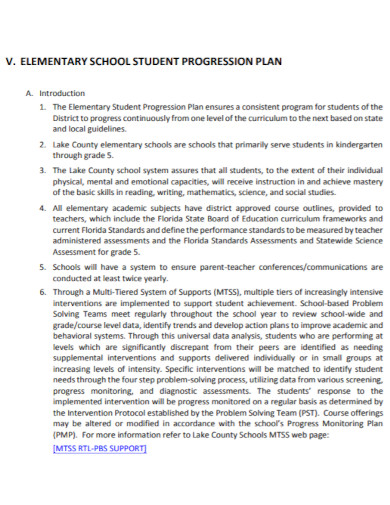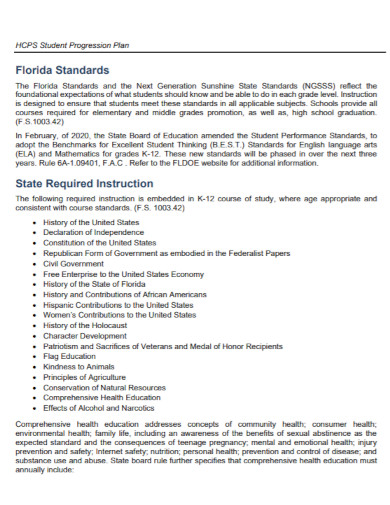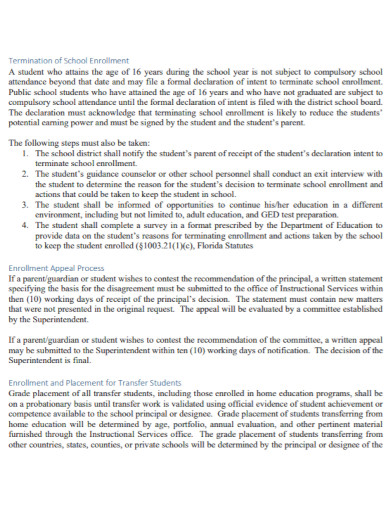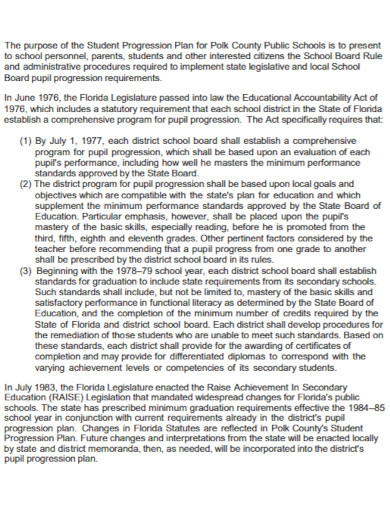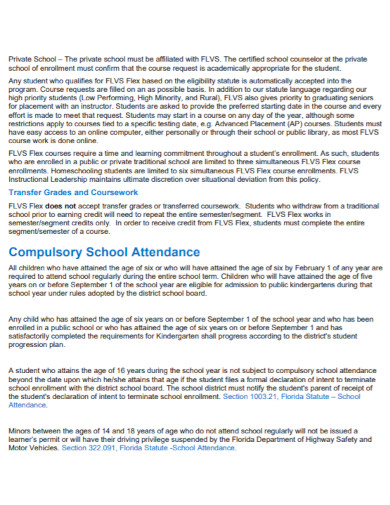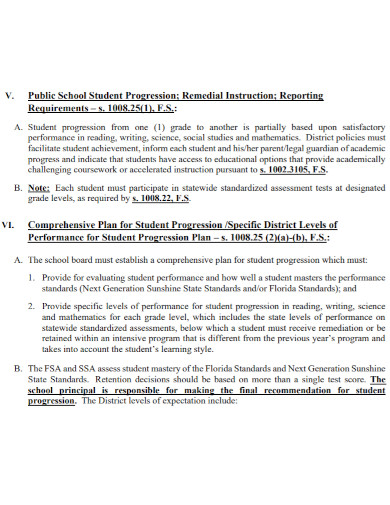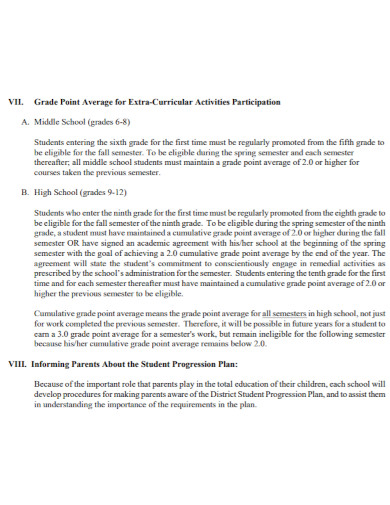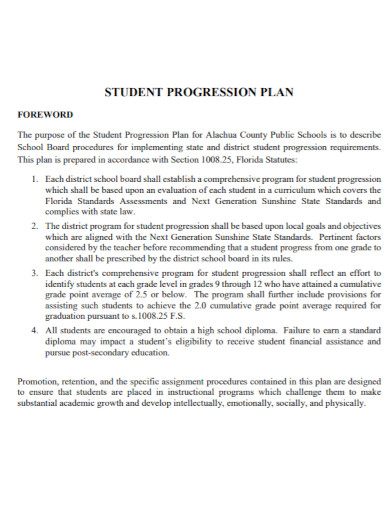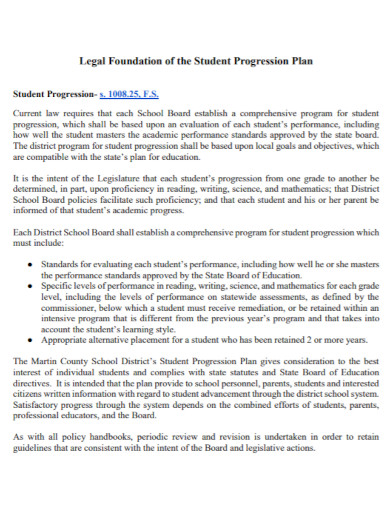10+ Student Progression Plan Examples to Download
Teachers, professors and principals know that the most important thing to remember in teaching is a student’s progress throughout the whole school year. Their progress depends on how far they have attained what they have learned in their level, before proceeding with the next year. Regardless if your students are in middle school, high school, or university, or even college. Teachers and professors almost always have a plan that fits the levels and needs of a student. This is what they refer to as a student progression plan. What can this plan do to help students? How do teachers use this kind of plan to help students? How do you even begin to write a progression plan for students? If you have thought of the following questions while reading the article, you would have to read below for the answers. Check them out now.
10+ Student Progression Plan Examples
1. Middle Grades Student Progression Plan
2. Student Progression Plan Template
3. School Student Progression Plan
4. Standard Student Progression Plan
5. Formal Student Progression Plan
6. Virtual School Student Progression Plan
7. Basic Student Progression Plan
8. Student Progression Plan in PDF
9. District Student Progression Plan
10. Elementary School Student Progression Plan
11. Printable Student Progression Plan
What Is a Student Progression Plan?
What is a student progression plan? A student progression plan is like a lesson plan for teachers only; it shows how much progress a student has made in terms of the year they are assigned. A student progression plan also determines the level and the progress of a student and how far they have reached that attainable goal. This type of plan gives the teachers and professors the idea of what to do for the next school year. It answers their question of how do I measure my students’ progress? In addition to that, a student progression plan has its own set of policies that teachers follow to see and to follow the progress of each individual from one level to the next.
The purpose for teachers to write a student progression plan is to be able to track down the progress of each student. As there are a lot of roadblocks students may face in learning, the progression plan helps teachers find these roadblocks and find a way to eliminate the issue and to see how far the student has learned and moved forward. In addition to that, it also helps teachers find those who may be struggling and to help them out. The student progression plan is a useful tool when dealing with how to measure progress and to solve the issue of not being able to attain the goal for the school year.
How to Write a Student Progression Plan?
For teachers who are planning on writing out a student progression plan, here are some tips you may want to check out. Of course each student progression plan differs from teacher to teacher. The important thing to remember is that the progress report of your students matters. How you plan out your progression plan would depend on the needs of your students. So here are some tips for you to check out.
1. Progress Procedures
Your progress procedures show the level or the steps on how far you have gone through and how far you are planning on going. Your progress procedures should also benefit your students and cater to their levels. The whole point of having this is to cater to the needs of your students. To check their progress step by step.
2. Student’s Evaluation
Adding your student’s evaluation is also part of the progression plan. It gives you an idea on where they may be struggling and the severity of it. In addition to that, the student’s evaluation is a good tool when you may be doing your assessment.
3. Solution for Students’ Problems
A part of your progression plan should be solutions that would benefit your students. The most common solution for struggling students is setting up a remedial program. Remedial programs help students who may be too shy to ask for help, get all the help they may need. This is also a useful solution for any year level.
4. Time Frame
Specifying how long you are planning this progression plan would also help. If you plan to make it as a whole school year, specify. The more specific you are with your progression plans, the better.
5. School Policy
When you write out your progression plan, remember to write it out based on your school policy as well as meeting the needs of your students. Some professors often base their progression plans on their school policy.
FAQs
Why is it so important to have a school progression plan?
The reason it is important to have something planned out is to make sure that you are giving out what your students may need. For you to know how far they have progressed, making a progression plan would help you outline the needs of your students.
What happens if the progression plan flops?
If the progression plan fails, a professor must retrace their steps and look for the reason it failed. As most progression plans work to identify and meet the needs of their students.
Does the progression plan need to have a specific student level for it to work?
Your progression plan depends on who your target level of students. If you are making your progression plan for middle school students, your target must also be for middle school students. Your solution must also cater to the level of your students.
Can a progression plan be short term or does it have to be long term?
Your progression plan can be both short term or long term. This depends on how you plan it as well as the time frame placed on the progression plan.
What if the progression plan only meets the needs of half of the students?
When you make your progression plan, think generally on how many students you can see who may be struggling. The purpose of the progression plan is to check the progress of your students, especially those who may be academically struggling in class. Your progression plan must cater to their needs more than the ones who may not be struggling.
It is never easy to write out a progression plan. It goes without saying, there are things you need to consider, one of which is the needs of your students. You also have to know where they may be struggling at which will take a lot of time and patience. But with the tips or the guidelines above, they may help you get started on writing out your student progression plan.


![10+ Student Progression Plan Examples [ School, College, University ]](https://images.examples.com/wp-content/uploads/2021/09/10-Student-Progression-Plan-Examples-School-College-University-.jpg)
